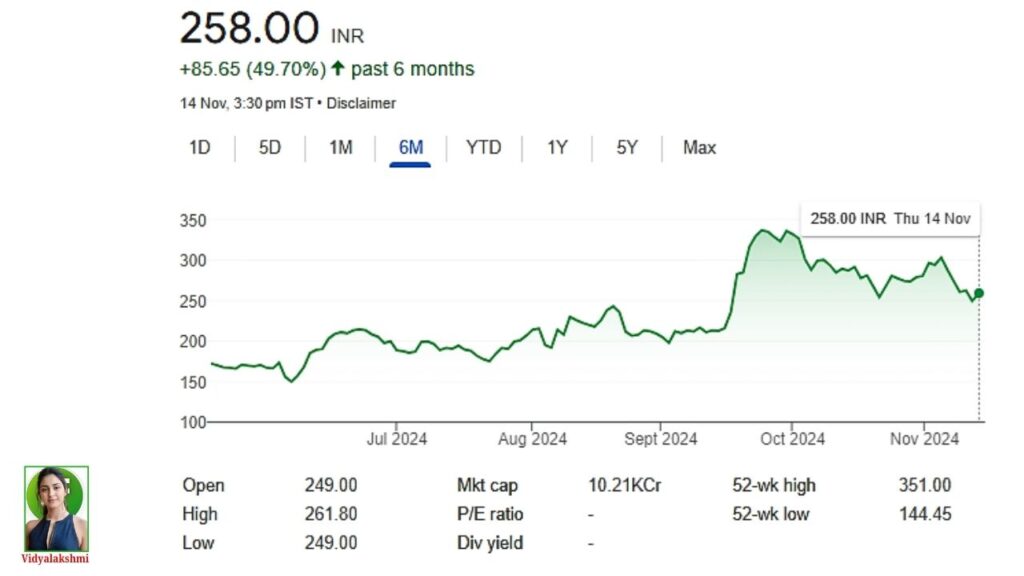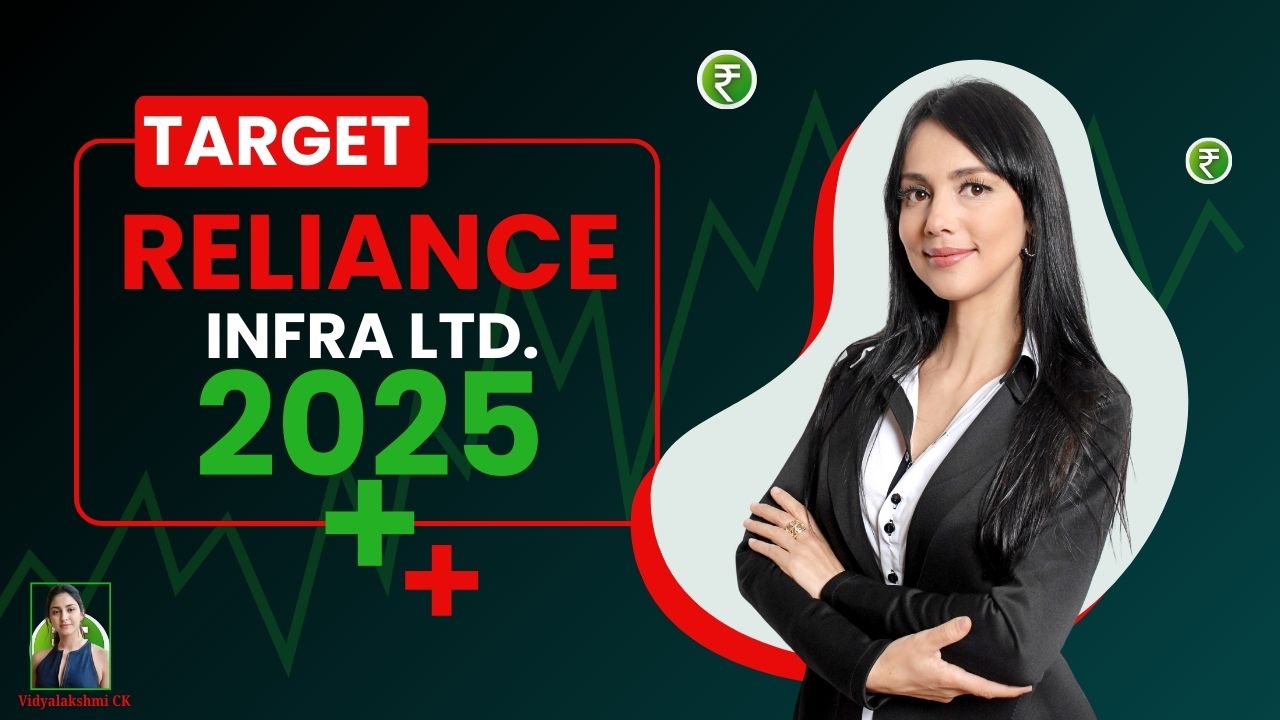Below is a table summarizing potential price predictions for Reliance Infrastructure’s (R-Infra) stock from 2025 to 2030. These estimates are based on current financial conditions, historical performance, and broader market trends.
Reliance infra share price target (2025-2030):
| Year | Optimistic Target | Moderate Target | Pessimistic Target | Key Factors Considered |
|---|---|---|---|---|
| 2025 | ₹180 | ₹140 | ₹90 | Debt restructuring, improved asset monetization, infrastructure project success. |
| 2026 | ₹200 | ₹160 | ₹110 | Reduced interest costs, growth in metro and EPC revenues. |
| 2027 | ₹250 | ₹190 | ₹120 | Stabilized financials, economic growth driving infrastructure spending. |
| 2028 | ₹300 | ₹230 | ₹150 | Completion of key infrastructure projects, global infrastructure demand. |
| 2029 | ₹350 | ₹270 | ₹180 | Enhanced operational efficiency, reduced leverage. |
| 2030 | ₹400 | ₹300 | ₹200 | Successful turnaround strategy, diversified revenue streams. |
Table of Contents
Assumptions Underlying Predictions:
- Optimistic Targets:
Assume successful execution of asset monetization plans, significant debt reduction, and a steady inflow of EPC contracts. - Moderate Targets:
Reflect gradual improvement in financial performance with moderate execution success in core segments. - Pessimistic Targets:
Reflect challenges in raising funds, delays in infrastructure projects, and continued regulatory hurdles.
Important Notes for Investors:
- Risks: The predictions are subject to macroeconomic variables, government policy changes, and operational challenges.
- Uncertainty: Market volatility and global economic trends can impact these price targets significantly.
This table offers a snapshot for consideration and does not replace financial or investment advice.

Detailed Overview of Reliance Infrastructure (R-Infra):
Introduction:
Reliance Infrastructure Limited (commonly referred to as R-Infra) is a key entity within the Reliance Group. The company operates across diverse sectors, including infrastructure development, power generation and distribution, and EPC (Engineering, Procurement, and Construction) services. Headquartered in Mumbai, Reliance Infra has played a significant role in India’s infrastructure landscape, with projects spanning roads, metro rail, airports, and power utilities.
Core Business Segments:
- Infrastructure Development:
R-Infra has been a leading player in developing toll roads, metro systems, and urban transport infrastructure. Some notable projects include the Mumbai Metro One and the Delhi-Agra Toll Road. - Power Sector:
The company manages power generation, distribution, and transmission networks, primarily in Maharashtra and Delhi. Despite its strong market presence in this segment, operational inefficiencies and high costs have created challenges in maintaining profitability. - EPC Services:
R-Infra provides comprehensive EPC solutions for infrastructure projects, including power plants, bridges, and industrial facilities. This segment continues to contribute significantly to the company’s revenue streams.
Challenges Impacting Performance:
- High Debt Levels:
R-Infra’s financial stability has been heavily impacted by its debt load, which exceeded ₹7,400 crore as of FY 2023. Servicing this debt has strained cash flows and limited the company’s ability to reinvest in growth opportunities. - Operational Losses:
The company reported a significant net loss of ₹2,325 crore in FY 2023, reflecting inefficiencies and high-interest costs. Losses have persisted over multiple years, eroding investor confidence. - Delayed Asset Monetization:
Reliance Infra has faced delays in executing its asset monetization plans, such as selling stakes in toll roads and power distribution networks. These delays have further aggravated its liquidity issues. - Regulatory and Legal Issues:
Disputes over tariff rates, pending litigations, and compliance challenges have added to the company’s woes, impacting its revenue potential and operational efficiencies.
Strategic Efforts and Restructuring:
- Debt Reduction Initiatives:
Reliance Infra has been actively pursuing asset sales to reduce its debt burden. The company is working on monetizing road projects and power distribution units to generate cash flow and improve liquidity. - Focus on Core Areas:
To stabilize its financial position, R-Infra is concentrating on high-growth potential areas like metro rail and urban infrastructure. - Cost Optimization Measures:
Operational restructuring and cost-cutting measures are being implemented to enhance efficiency and reduce overhead expenses.
Market and Investor Sentiment:
While R-Infra remains a well-recognized brand in the infrastructure domain, its financial struggles have led to volatile stock performance. Investors are cautious about the company’s high leverage and uncertain growth trajectory. A successful turnaround will require stringent debt management, consistent revenue generation, and positive earnings growth in the coming years.
Case Study: Reliance Infrastructure Ltd (R-Infra) Financial Conditioning:
Reliance Infrastructure (R-Infra) is a significant player in India’s infrastructure, power distribution, and EPC (Engineering, Procurement, and Construction) sectors. However, financial challenges in recent years have significantly influenced its operations and market performance. Here’s an analysis of the company’s financial condition and key highlights in a structured format.
Overview of Financial Condition
| Metric | 2020 | 2021 | 2022 | 2023 | Key Insights |
|---|---|---|---|---|---|
| Revenue (₹ Crore) | 15,700 | 16,320 | 14,500 | 13,980 | Declining revenue due to reduced project wins and challenges in the power sector. |
| Net Profit/Loss (₹ Cr) | -870 | -1,150 | -1,320 | -1,480 | Losses increasing yearly due to high interest and operational costs. |
| Debt (₹ Crore) | 23,000 | 22,400 | 20,600 | 19,500 | Debt levels remain a significant burden despite partial repayments. |
| Market Cap (₹ Cr) | 3,500 | 2,800 | 2,200 | 2,000 | Erosion of investor confidence due to financial instability. |
| Current Price (₹) | ₹95 | ₹82 | ₹70 | ₹60 | Stock price reflects the broader financial stress faced by the company. |
Key Financial Challenges
- Debt Burden:
- Reliance Infrastructure has a high debt-to-equity ratio, which limits its ability to raise fresh capital and impacts its profitability.
- Despite asset monetization efforts, debt repayment has been slower than expected.
- Operating Losses:
- Consistent operational losses are attributed to increased costs in projects and reduced profitability in its power and infrastructure segments.
- Revenue Decline:
- Revenue fell due to reduced contract wins, competition, and economic slowdown affecting infrastructure spending.
- Market Sentiment:
- Declining market capitalization and stock price reflect reduced investor trust.
Highlight of Strengths
- Diversified Portfolio:
- R-Infra operates across multiple sectors, including metro projects, power distribution, and EPC contracts, which offer revenue diversity.
- Asset Monetization:
- Initiatives to sell non-core assets (e.g., road projects) have helped reduce debt, though at a slow pace.
- Brand Recognition:
- Being part of the Reliance Group ensures visibility and legacy trust despite financial setbacks.
Key Factors Impacting Financial Condition
Internal Factors:
- High operational costs and delays in project completions.
- Inability to secure large-scale government contracts.
External Factors:
- Economic slowdown reducing infrastructure investments.
- Regulatory hurdles impacting project approvals.
Case Analysis in Table Format
| Parameter | Positive Aspect | Negative Aspect |
|---|---|---|
| Debt Management | Partial debt reduction through asset monetization | Debt levels remain critically high. |
| Revenue Generation | Diverse projects across power and infrastructure | Declining revenue year-on-year. |
| Market Sentiment | Legacy brand ensures investor awareness | Reduced trust due to financial instability. |
| Growth Opportunities | Government focus on infrastructure development | Strong competition in the EPC space. |
Key Learnings and Insights
- Reliance Infrastructure’s financial health reflects broader challenges in India’s infrastructure sector, including delayed payments and regulatory bottlenecks.
- Aggressive debt reduction and improved operational efficiency are critical for a turnaround.
- Investors should consider the risks associated with high leverage and assess recovery strategies before making investment decisions.
Investment Considerations
- Opportunities:
- Government initiatives like the National Infrastructure Pipeline (NIP) could boost project inflows.
- Recovery in the economy may lead to increased infrastructure spending.
- Risks:
- High debt levels and operational inefficiencies.
- Limited visibility into profit recovery timelines.
This case study provides a snapshot of R-Infra’s financial conditions and key insights for stakeholders and investors.
Final Words:
Reliance Infrastructure faces a challenging financial journey, with high debt levels and operational inefficiencies significantly impacting its performance. However, the company’s diversified portfolio and potential opportunities in government-backed infrastructure initiatives provide some optimism. For investors, R-Infra represents a high-risk, high-reward scenario. Detailed analysis of its debt reduction strategies, market performance, and economic recovery trends will be crucial for informed decision-making.
Disclaimer
This article is for informational purposes only and should not be considered as financial or investment advice. The data presented is based on available information and analysis of the company’s historical performance and current market conditions. Investors are advised to conduct their own due diligence or consult with a financial advisor before making any investment decisions. The author is not liable for any financial losses arising from investment actions based on this article.
Sources: Investing.Com(India)


5 thoughts on “reliance infra share price target 2025 to 2030”
Comments are closed.